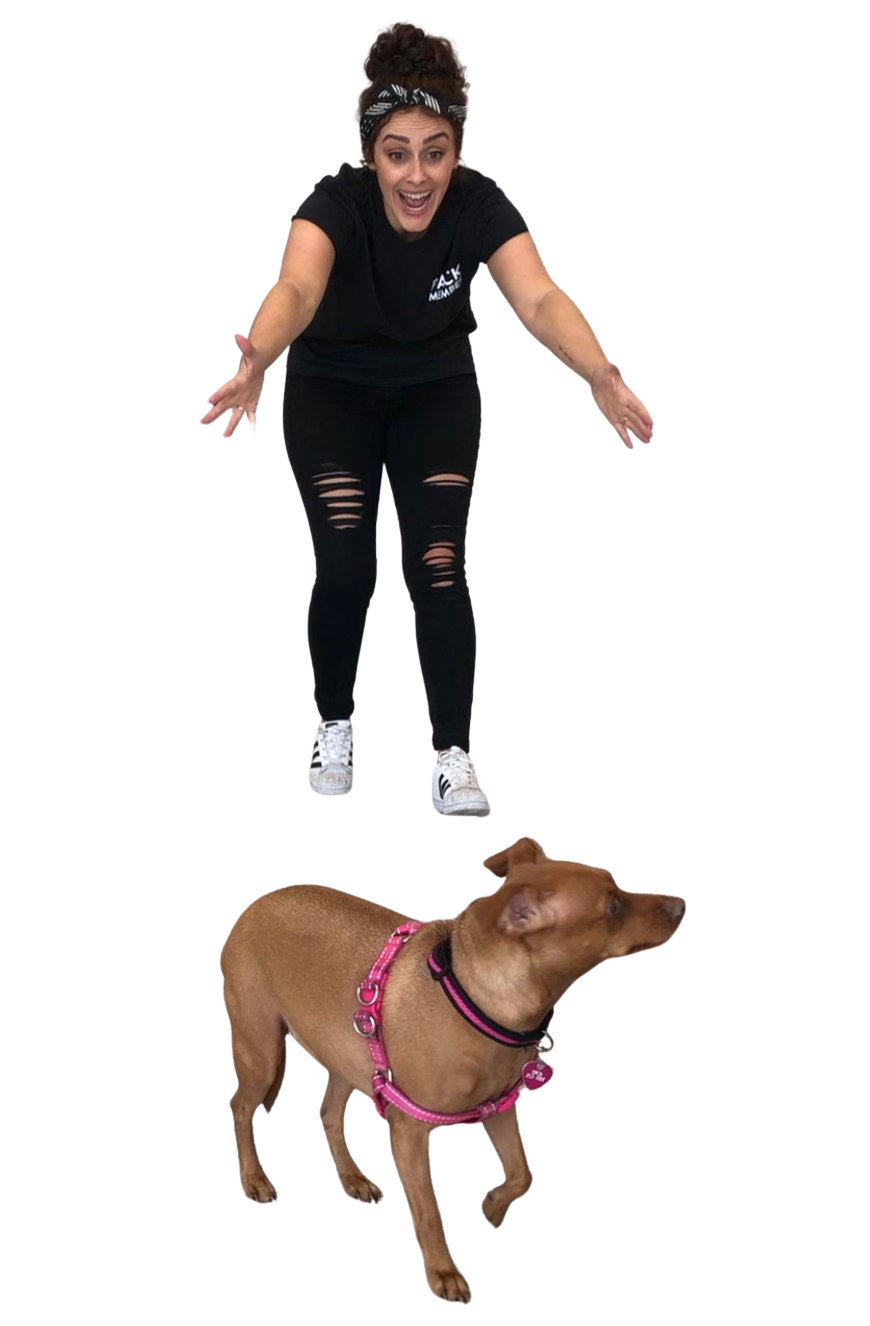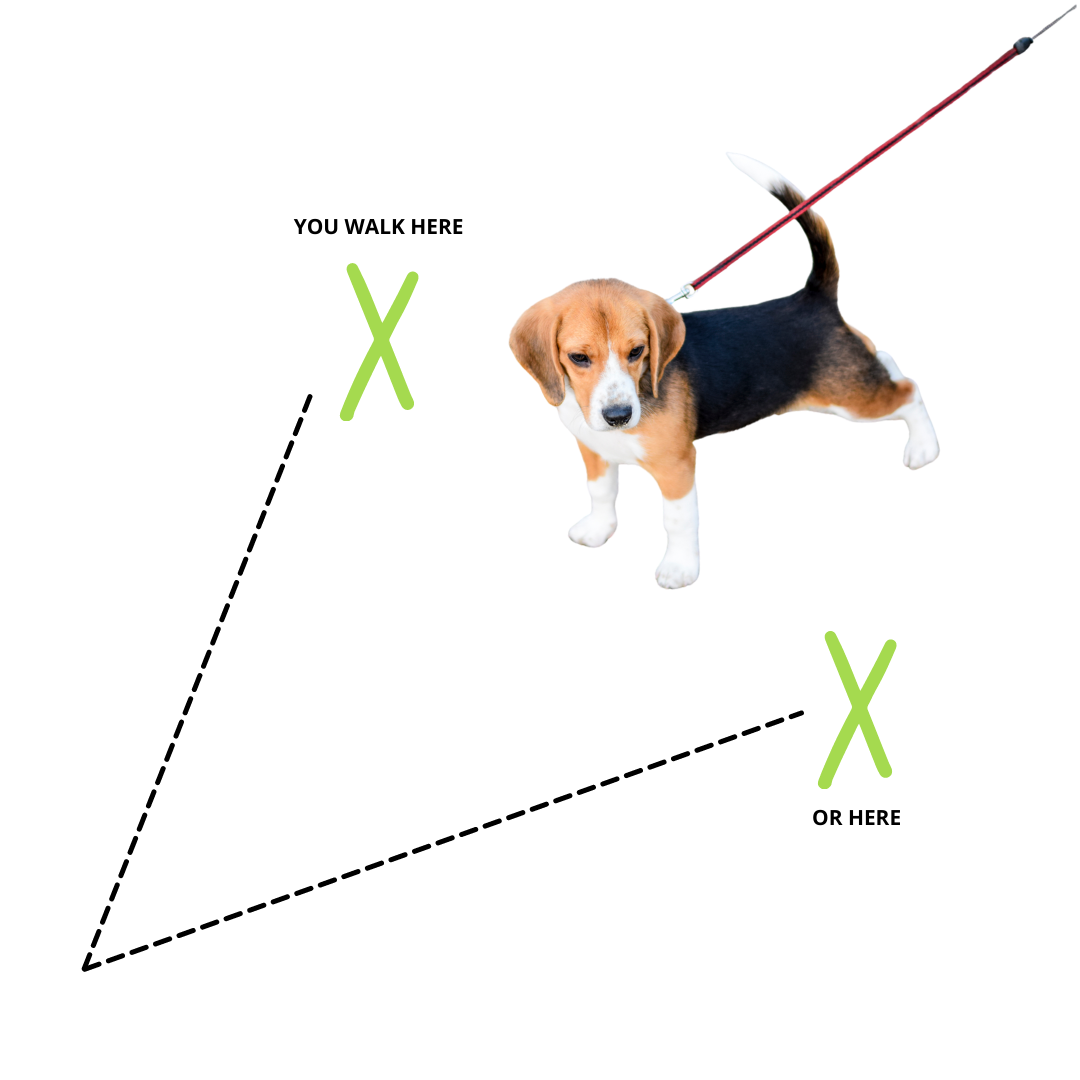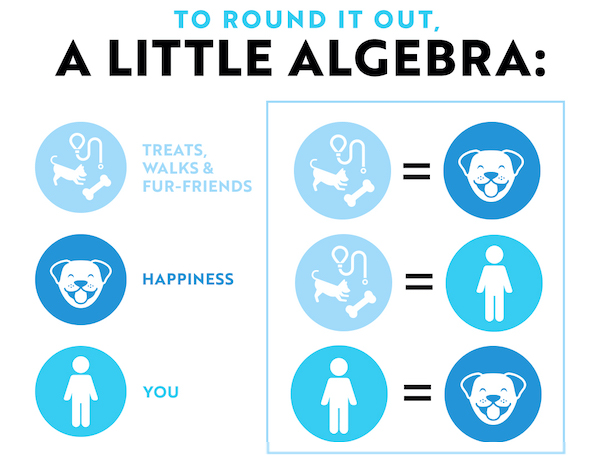
If you are here, you have probably already recognized you have a dog that is insecure, fearful, scared, nervous, worried, etc. Stay tuned for our next article about How to Recognize Fear in Dogs. Part of bonding with your fearful dog is taking things at their pace. Identifying their subtle “I’m uncomfortable” body language cues will ensure you stay under threshold and reduce any steps backwards in the process.
Apart from that, there is the following:
THE APPROACH:
If your first instinct is to go, “Awwwww! Omg look at that pup! It’s soooo cute!! I just wanna grab it and hug it and squeeze its little cheeks!! Gimme Gimme Gimme!” Let’s stop right there.
The well-intentioned, dog super-fan depicted above might be you… but it is also a scared dog’s worst nightmare. In fact, any dog, regardless of confidence, should never be approached this way. Just as you would never approach a child with this much emotional intensity, you should never approach a dog that way either.
Dogs interpret body language through a DOG’s point of view.
To a dog, your affection could easily be interpreted as purely predatory:
- Arms out = Wings out, claws out
- Smiling face or toothy grin = Lifted lip, growl, fangs ready to eat you
- Direct “loving” eye contact = Murderous intentions
- Yelling, screaming “omg you’re sooo cute!” = Loud… and in nature, loud noise indicates impending danger (think ‘Battle Cry’)
- Reaching toward the head (i.e., petting) = Going in for the kill
If you didn’t know this before, don’t feel bad. It’s NEVER too late! Your intentions are in the right place, so let’s get your body to meet them there. Having a good approach when meeting a scared pup is like making a really GOOD first impression and will go a long way towards building trust – do this by being as BORING as possible.

Predictable and non-threatening body movements are key.
If you didn’t know this before, don’t feel bad. It’s NEVER too late! Your intentions are in the right place, so let’s get your body to meet them there. Having a good approach when meeting a scared pup is like making a really GOOD first impression and will go a long way towards building trust – do this by being as BORING as possible.
STEPS ON HOW TO PROPERLY APPROACH A DOG:
STEP 1: Move at a slow pace – the key is to be slow, not creepy. Hesitancy reads as fear… and fearful dogs DO NOT want to be around fearful humans. Opposites attract, so confidence is key. Try to manifest the sloth from the Zootopia DMV (Flash). Slow, but totally sure of himself.
STEP 2: Avoid quick changes in direction – stand up slowly, even if it’s AFTER you’ve already pet the dog. Don’t risk ruining a good interaction by scaring the dog at the end. The dog will remember the LAST feeling they had when around you, not the first.
STEP 3: Avoid direct eye contact – turn your head to the side and use your peripheral.
STEP 4: DO NOT walk in a direct path toward the pup – think of a ‘Bee Line’ and do the opposite of that. Walk to the side of the dog and wait.

STEP 5: Avoid reaching out or leaning in – DO NOT close the gap between you and the dog, that’s their job. Your statue-like demeanor will give the dog the space they need to allow their natural curiosity to set in. When curiosity trumps fear, your bonding window has opened! Do not rush forward or it may snap shut again.
STEP 6: Remain small – If you are noticing more relaxed and curious body language than fearful and would like to attempt physical contact, the least obtrusive way to do so is from a seated position. For a small dog this might be sitting on the ground but for a larger dog, sitting on the ground could put your face directly in theirs. Instead try sitting on a couch or a chair.

THE TOUCH:
To keep it simple – dogs generally DO NOT like being pet on their muzzle, legs, paws, tail, or top of the head. Also, with a fearful dog, it’s best to avoid any belly rubs. Most dogs roll onto their back to communicate fear/anxiety and therefore a desire to END an interaction, NOT to invite you in for a belly rub. Generally fearful dogs are even more likely to do these “submissive rolls” and therefore are more likely to get stuck with unwanted affection in that area. On the other hand…
Dogs generally DO enjoy being pet under the chin, at the base of the tail, or on the back of the neck just above their shoulder blades.
Dogs also prefer long gentle strokes over short pats. If your dog specifically reacts well to physical affection you may want to go a step further and incorporate Massage or TTouch. Also try adding brushing into your routine. Although some dogs have already had a negative experience with grooming, some ADORE it and get the same calming benefits as with massage.
POSITIVE ASSOCIATION:
Now that you have eliminated all the triggers in your approach and touch, you may have moved the pup’s emotional needle from SCARED to NEUTRAL. YAY! Step one accomplished.
Positive Association – linking yourself, interaction with you, or proximity to you, to something the pup already LOVES will start the process of moving that emotional needle from NEUTRAL all the way over to TRUSTING or even BONDED.
You may have already started creating this association with your petting and massage. Take it a step further with Treats, Walks and Fur-Friends!
TREATS
Treats or Food can be used as a training tool, a way to motivate your dog to perform tasks, OR just as a way of building a more trusting relationship between dog and human. If the pup is food motivated, treats can be used to change the pup’s initial emotional response to you (think about Pavlov’s dogs’ response to the bell). The trick to creating an association is consistently pairing the two items. So, whoever feeds the dog, will bond with the dog. If your scared pup is having a harder time bonding with a specific family member, have them follow all steps above (fixing their approach and touch) and then, have them take over all feeding. For less food motivated dogs, a higher value food reward may be needed to create the association. When determining the definition of “high value” for your pup, taste is in the eye of the beholder.
Most dogs value meat over veggies and fresh food over processed. Most dogs ALSO like plush toys, squeaky toys, and balls (or other toys that can be tossed and chased).
If your dog is not food motivated AT ALL orrrr if they don’t enjoy the close contact needed for treat delivery, toys may be the way to their heart. Not sure what they like? Get one of everything! If they don’t play the first time you try, try again each week. In some circumstances, play can build trust, but in some cases the dog will need to have established trust before they will be relaxed enough to play in front of you.
WALKS
Now, let’s take a walk!! Pups love to go on walks because their genetic make-up demands that they exercise and find sources of mental stimulation. One of the best stimulation sources is SMELLING. Many dogs will gain confidence from the act of scent tracking itself (as they find what they were tracking, they gain confidence in themselves for achieving a goal) but more than that, walks with YOU specifically can work wonders on a bond. As your pup encounters new experiences outside the home, they will be vulnerable. Having you there to lead them will remind them that you are capable of taking care of them. This repeated experience over a matter of weeks or months will add up to an overall feeling of trust.
FUR-FRIENDS
If the walk itself is not doing the trick, consider making it a Pack Walk. Your dog may not like you yet, but do you know any other dogs that do?! Again, we are trying to use positive association to convince your dog that you are THE bringer of all things awesome. But if they won’t take your word for it, find someone (a dog) to speak on your behalf. Since dogs speak dog, better than human, they may be more easily convinced by a fellow fur-friend. Let your scaredy dog witness you positively interacting with the friend. Let them experience the friend’s confidence around you. Who knows, your scared pup could look up and say “hey, maybe this human isn’t so bad after all?”

WARNING: Please keep your dog’s SPECIFIC insecurities in mind. If your pup is afraid of traffic or the leash, the walks may not be for them. If they have grooming or handling trauma, brushing or massage may not be for them. If they do not like other dogs, it won’t matter that other dogs like you. And regardless of who they are, you will still want to use proper approach protocol (listed above) when delivering any treats – ex: no leaning in or over.
OBEDIENCE:
Think of the people you trust the most. What do they bring to the table… Reliability? Good Nature? Dependability? Consistency? Participation in your goals? Dogs are looking for those same qualities in you.
Like a walk, Obedience Training can have the same effect in building trust between dog and owner – as you partner up with them to figure out an obedience game or task, you will prove to them your value as a partner overall. You will provide a firm foundation by stating your expectations clearly, you will consistently reward what you want and not what you don’t want, you will celebrate the small victories and always end on a positive note.
These aren’t just the keys to a good training methodology, they are the keys to a good relationship.
In addition to strengthening your bond, obedience training will occupy the dogs monkey mind, distracting them from their anxiety and will relieve them of excess energy. A properly exercised dog is generally more emotionally pliable and therefore, easier to bond with.
TIME & SPACE:
As you’ve read, there is a lot you can DO to promote a bond with your scared dog, BUT there is also a huge benefit to doing NOTHING AT ALL. Not all fearful pups are ready to jump into jobs, games and obedience training. Sometimes they just need a little bit of quiet time or to be ignored completely.
Give them space, let them come to you.
It’s nearly impossible to put yourself into the mind of what your scared pup is thinking, but with these tips and a little bit of time will help them create a lasting bond one step at a time.